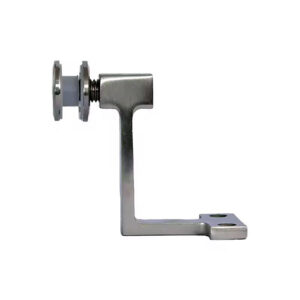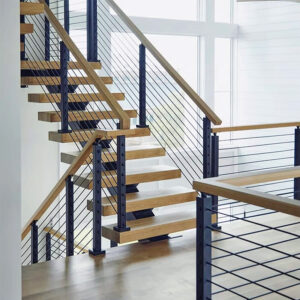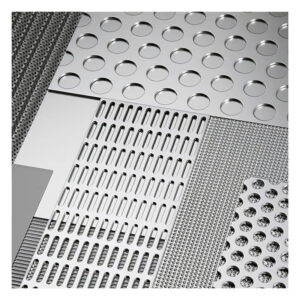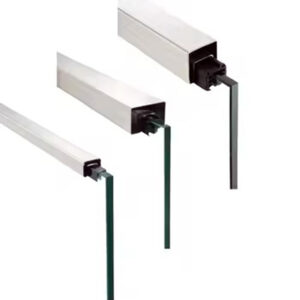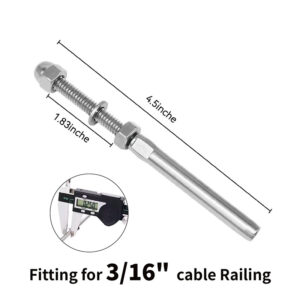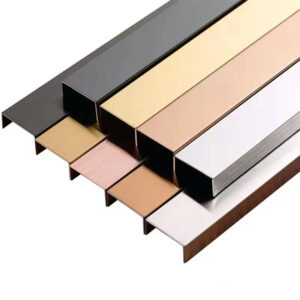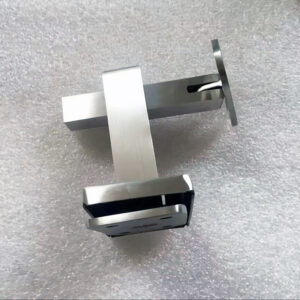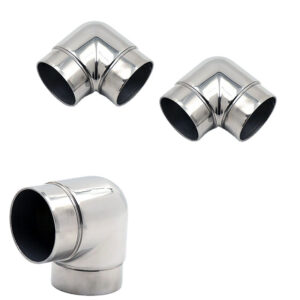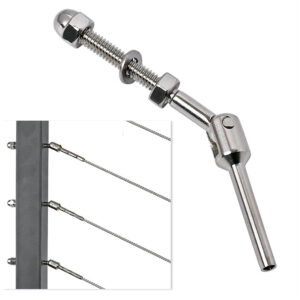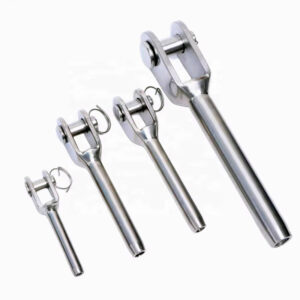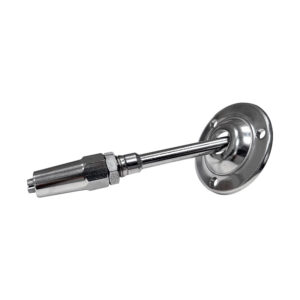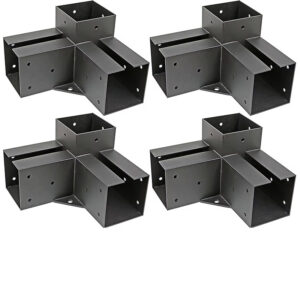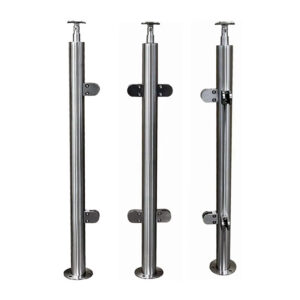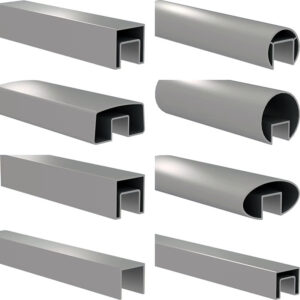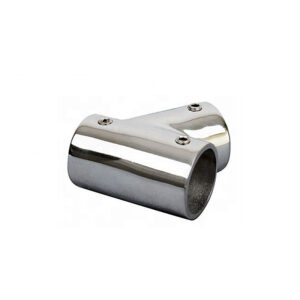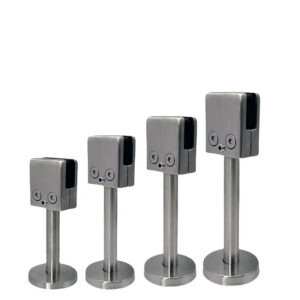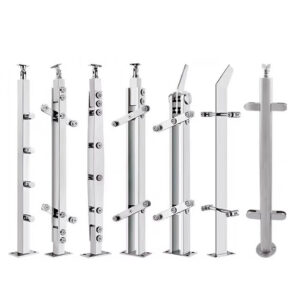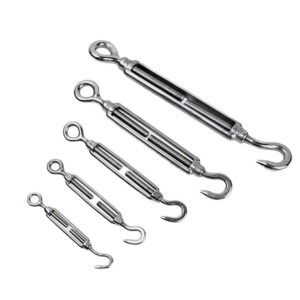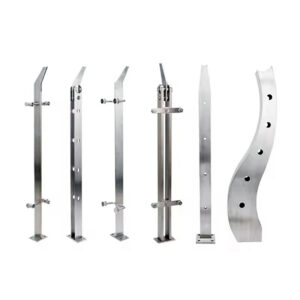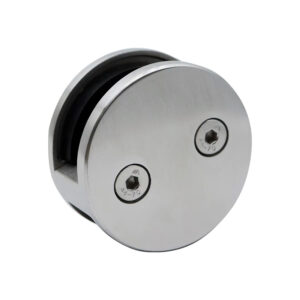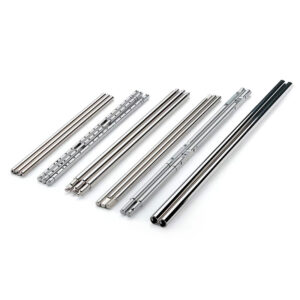Finding railing adjustment hardware that actually works under real conditions shouldn’t be complicated. After 23 years manufacturing stainless steel railing systems, we’ve learned that contractors need adjustment components that hold their settings, install without fighting, and perform reliably across different applications. The difference between smooth project completion and costly callbacks often comes down to choosing adjustment hardware that’s engineered for the job, not just priced to move.
Core Adjustment Hardware Systems & Performance Reality
Adjustable Post Mounting Systems
Our adjustable post bases handle slope variations and installation tolerances contractors encounter daily. Standard adjustment ranges cover ±15mm vertical and ±10mm horizontal positioning, with locking mechanisms that maintain settings under load. Available in 304 stainless for interior applications and 316L for coastal environments, these bases integrate with standard post diameters from 42mm to 76mm.
Key performance features include corrosion-resistant adjustment threads, positive lock mechanisms that won’t drift, and installation compatibility with anchor bolts from M10 to M16. The modular design means you stock fewer SKUs while covering more applications.
Handrail Height Adjustment Components
Commercial projects often require precise handrail height compliance across varying floor levels. Our adjustable handrail brackets provide 50mm adjustment range while maintaining structural integrity. Each bracket includes integrated slope compensation and secure locking systems that prevent movement after installation.
These components prove especially valuable in retrofit situations where existing mounting points don’t align with current code requirements. Installation typically takes 40% less time compared to custom fabrication solutions, with adjustment capability built in rather than requiring field modifications.
Glass Panel Adjustment Hardware
Glass railing installations demand precision adjustment to accommodate building tolerances and thermal movement. Our adjustable glass clamps and spigot systems provide fine-tuning capability while maintaining the clean aesthetics required for modern installations.
The adjustment hardware fabrication 316L grade ensures long-term performance in demanding environments, with micro-adjustment capability allowing installers to achieve perfect alignment even when structural conditions aren’t ideal. Each component includes weather seals and thermal compensation features.
Cable Railing Tension Adjustment Systems
Proper cable tension requires precision adjustment hardware that maintains settings over time. Our tensioning systems provide controlled adjustment with clear load indicators, preventing over-tensioning while ensuring code compliance. Stainless construction eliminates corrosion issues that plague inferior adjustment mechanisms.
These systems integrate with standard cable diameters and provide consistent tensioning across multiple cable runs. The precision adjustment components include built-in safety features preventing cable failure from improper installation.
Technical Specifications for Real Applications
| Component Type | Adjustment Range | Load Capacity | Material Options | Installation Time |
|---|---|---|---|---|
| Post Base Adjusters | ±15mm vertical, ±10mm horizontal | 5kN lateral, 8kN vertical | 304, 316, 316L | 15-20 minutes |
| Handrail Brackets | 50mm height range | 2.5kN distributed load | 304, 316L | 10-15 minutes |
| Glass Clamps | ±8mm alignment | 1.5kN per clamp | 316, 316L | 8-12 minutes |
| Cable Tensioners | 25mm adjustment travel | 2kN cable load | 316L only | 5-8 minutes |
Material Selection Reality
304 stainless works for most interior commercial applications with standard environmental exposure. 316 grade handles moderate exterior conditions and light industrial environments. Marine grade adjustment systems ODM applications require 316L for long-term reliability in coastal or chemical exposure situations.
Project Applications Where Adjustment Hardware Matters
Commercial Building Installations
Office buildings and retail spaces often present installation challenges where precise adjustment capability saves projects. A recent 12-story office installation used our adjustable post systems to accommodate floor level variations across different building phases, reducing installation time by 35% compared to custom fabrication approaches.
The commercial adjustment hardware provided consistent appearance while dealing with real-world construction tolerances. Maintenance teams report easy access for periodic adjustments without specialized tools or extensive disassembly.
Multi-Unit Residential Projects
Residential developments benefit from standardized adjustment hardware that accommodates unit-to-unit variations without custom solutions. Our modular adjustment systems handle typical construction tolerances while maintaining code compliance across multiple units.
Project managers find the inventory simplification valuable—fewer unique parts needed while maintaining adjustment capability for varying conditions. Installation crews report faster completion times with less rework.
Industrial and Infrastructure Applications
Manufacturing facilities and infrastructure projects demand adjustment hardware that performs reliably under heavy use. Our precision adjustment components handle operational loads while providing maintenance access for long-term performance.
Custom adjustment manufacturing capability allows optimization for specific industrial requirements, from chemical exposure resistance to vibration tolerance. These applications prove the value of quality adjustment mechanisms over time.
Marine and Coastal Installations
Harsh marine environments test adjustment hardware durability. Projects using our 316L adjustment systems show excellent long-term performance, with adjustment mechanisms remaining functional after years of salt spray exposure.
“Marine installations require adjustment hardware that maintains function in corrosive environments—standard grades fail within months.” —Coastal Construction Association
Installation Support & System Integration
Modular Installation Approach
Our adjustment hardware systems integrate with standard railing components, reducing field assembly complexity. Pre-configured adjustment ranges cover most applications without custom engineering, while maintaining compatibility with existing mounting systems.
Installation teams find the standardized approach reduces learning curve time and minimizes installation errors. Clear adjustment procedures and load limits prevent over-adjustment that can compromise system performance.
Quality Control & Manufacturing Precision
23 years of manufacturing experience shows that adjustment hardware quality directly impacts project success. Our precision adjustment components undergo load testing and corrosion resistance verification before shipping.
Manufacturing tolerances ensure smooth adjustment operation and positive lock engagement. Quality control includes functional testing of adjustment mechanisms under load, preventing field failures from manufacturing defects.
▶ Discuss Installation Requirements ◀
Frequently Asked Questions
How do I select the right adjustment range for my project?
Most commercial installations require ±10-15mm adjustment capability to handle typical construction tolerances. Renovation projects often need larger adjustment ranges, while new construction with tight tolerances can use smaller ranges. Consider both initial installation needs and future maintenance requirements when specifying adjustment hardware.
What’s the difference between 316 and 316L for adjustment mechanisms?
316L provides better corrosion resistance in welded assemblies and chemical environments. For adjustment hardware with welded components or marine applications, 316L prevents sensitization that can cause premature failure. Standard commercial applications perform well with 316 grade materials.
How often do adjustment mechanisms require maintenance?
Properly installed adjustment hardware typically requires inspection every 2-3 years in commercial applications. Marine environments may need annual inspection. Lubrication of adjustment threads extends service life, particularly in high-traffic areas or corrosive environments.
Can adjustment hardware accommodate thermal movement?
Our adjustment systems include thermal compensation features for applications with significant temperature variations. Glass railing applications particularly benefit from thermal adjustment capability, preventing stress concentration during thermal cycling.
What tools are required for field adjustment?
Most adjustment operations require standard hex keys and wrenches. We provide torque specifications and adjustment procedures to prevent over-tightening. No specialized tools needed for normal adjustment operations, simplifying maintenance requirements.
How do I ensure code compliance with adjustable systems?
Adjustment hardware maintains structural ratings throughout the adjustment range when properly installed. We provide load certification for each adjustment position, ensuring code compliance regardless of field adjustment requirements.
▶ Get Application-Specific Guidance ◀
Performance Comparison & Selection Criteria
| Feature | Standard Fixed Hardware | Basic Adjustable | Premium Adjustment Systems |
|---|---|---|---|
| Installation Flexibility | Limited | Moderate | High |
| Future Modification | Requires replacement | Limited range | Full capability |
| Load Performance | Excellent | Good | Excellent |
| Maintenance Requirements | Minimal | Moderate | Low |
| Initial Cost | Lowest | Moderate | Higher upfront |
| Total Project Cost | Variable | Reduced | Lowest overall |
Selection Guidelines for Different Projects
New construction with tight tolerances can use fixed hardware effectively. Renovation projects benefit from moderate adjustment capability. Complex installations or high-maintenance environments justify premium adjustment systems for long-term value.
Esang Metal combines 23 years of manufacturing experience with practical understanding of field installation requirements. Our adjustment hardware balances performance with cost-effectiveness, providing reliable solutions for demanding applications.
“Quality adjustment hardware prevents costly callbacks and reduces installation time significantly.” —Commercial Contractors Association
▶ Connect with Our Technical Team ◀
The difference between project success and problems often comes down to choosing adjustment hardware engineered for real-world conditions. Our systems provide the adjustment capability contractors need while maintaining the structural performance projects demand.
